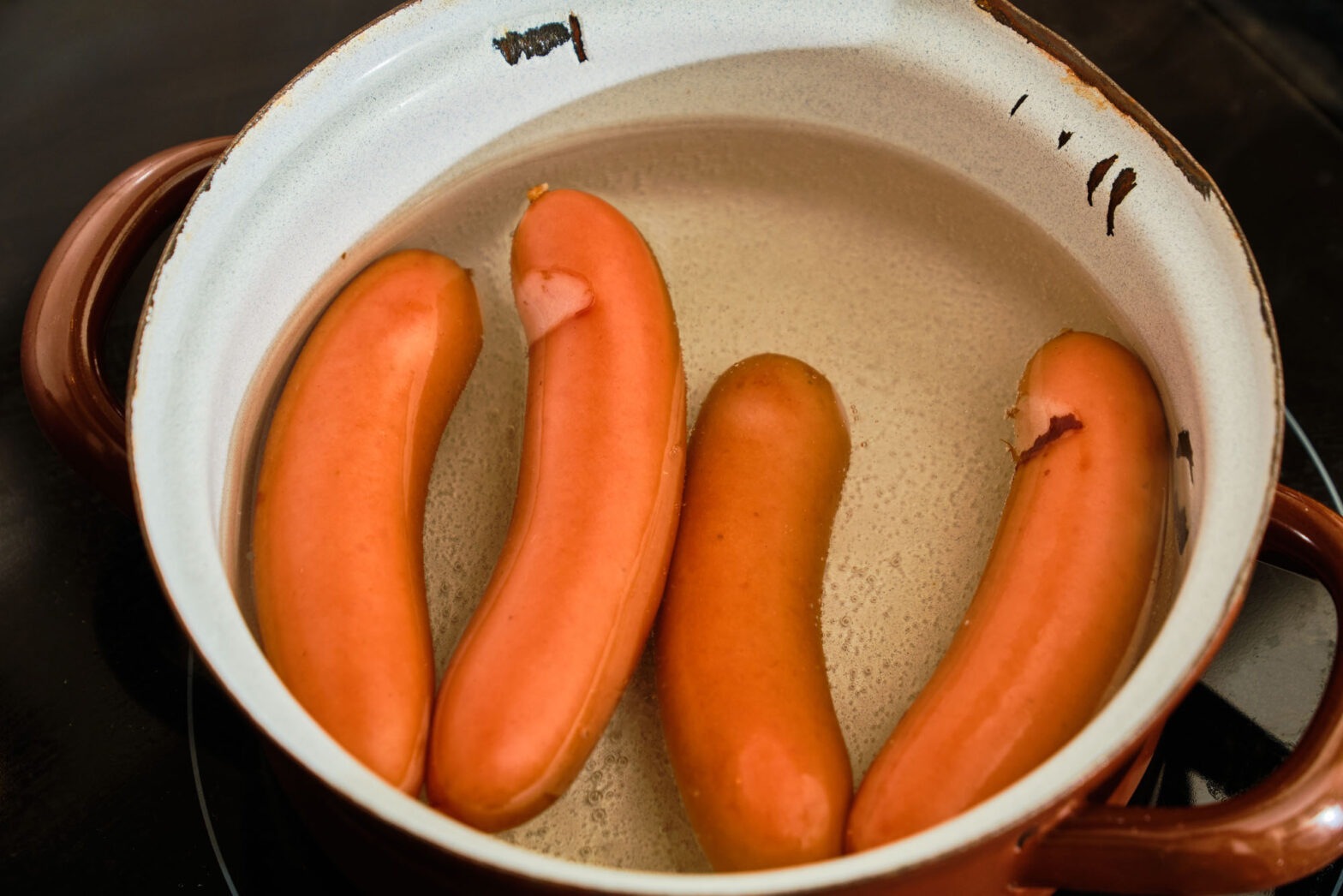Say you’re boiling hot dogs or brats so they’re heated to the right internal temperature and thereby safe for everyone at the table to eat.
Eventually, you’ll see the sausages floating in the water. And that’s when a question will start to plague you: Do boiled sausages float when they’re done? Or is there something else that’s making them come up in the pot?
I’ve made, cooked, and eaten more sausages than the missus and the doctor would approve of, and I’ve learned a thing or two about cooking a fine sausage in a pot of water in my time. So I’ve got the answer for you, and I sure as hell bet it’s going to end up being a surprise!
If you’re hungry for some good ol’ BBQ knowledge, let’s not keep you waiting and dive right in.
Do Boiled Sausages Float When They’re Done?
So, do boiled sausages float when they’re done?
I set out on a mission to find out the answer once and for all. I gathered my favorite brats, franks, and weiners, filled a pot with water to the top, fired up the stove, and got down to boiling.
The first thing I noticed was that as soon as I brought the water to a full boil, the sausages started to float. Now, this ain’t necessarily a bad thing, but it did make me wonder if the sausages would float when they were fully cooked.
This got me thinking: Maybe it’s not the sausages that float when they’re cooked, but rather the convection currents in the water they’re being boiled in. See, when you bring a pot of water to a boil, the hot water starts rising to the top and gets replaced by colder water that rises to the top again, and so on.
The same thing happens to eggs when you boil them in a pot. The water in the pot gets to a boil, convection currents form, and they lift the eggs to the surface long before they’re fully done.
So, the answer to the age-old question, at least as far as I can figure it out, is clear: Boiled sausages don’t float when they’re done, but because of the lift they get from the convection currents in the water.
There you have it.
Why Do Some Sausages Keep Floating?
Okay, we’ve made it clear that sausages don’t necessarily float when they’re done. This begs the question: Why do some sausages, like hot dogs, float on the water after they’re done—even if the water’s no longer boiling?
I gave it some thought and, once again, the answer comes down to physics. To make a long story short, it’s all about buoyancy.
When you boil sausages in a pot of water, you’re cooking them with moist heat. But moist heat is still heat, and it causes the sausages to dry out somewhat and lose some of the moisture they originally had.
This, along with the fact that the sausages expand when they’re heated, eventually makes them lighter than the water, gaining positive buoyancy as a result. In plain English, the cooked sausages displace more water that their weight, so they stay afloat.
This tends to happen mostly to emulsified sausages, like hot dogs and bratwursts, and less to dense, coarsely ground sausages that remain heavier than water even after prolonged boiling.
The Bottom Line
Boiled sausages don’t float when they’re done cooking, but when the convection currents in the water become strong enough to lift them to the top. That said, emulsified sausages will stay afloat after the water is no longer boiling because they’ve lost weight and gained positive buoyancy.

